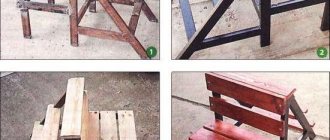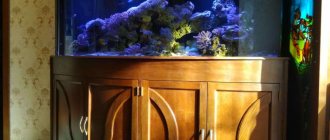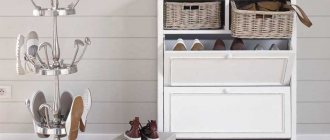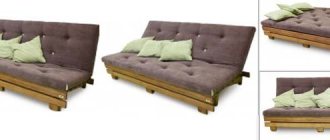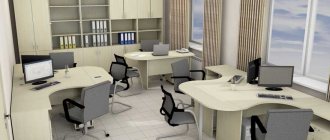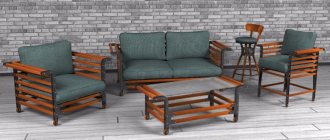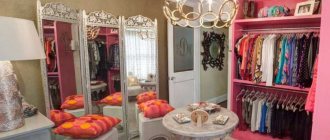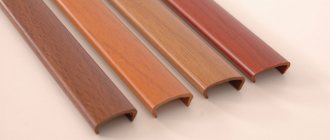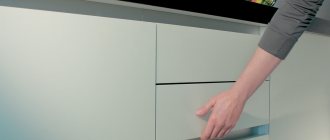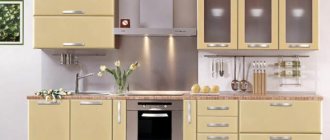Many potential customers of kitchen furniture are interested in which kitchen set is best to order so that it is optimal in price and in practicality to meet expectations. High-quality production of materials is a fundamental issue for kitchen modules. After all, they are intended for maximum intensive use. Every day, furniture will be exposed to hot steam, moisture, high temperatures, and various other factors. It must withstand long service life.
Few people know that even the most inexpensive kitchen can turn out to be of good quality if you calculate everything correctly and select the details. It is better to find out in advance what furniture frames, facades, countertops and other elements are made of. A custom kitchen goes through a number of preliminary stages. This is free planning, zoning, calculations, measurements, drawing up an approximate project and obtaining the final cost of the finished product.
Facade processing methods
To give a finished look to kitchen facades, the following coating is applied to the surface of the base:
- acrylic plastic,
- melamine film,
- enamel,
- polymer film (PVC),
- veneer.
Resistance to scratches, the likelihood of varying the color palette and the degree of difficulty in maintenance depend on the coating of kitchen facades. The parameters of plastic, film, veneer and other materials in the table below will help you decide on the coating of kitchen facades.
Material Parameters Plastic facades Advantages: practicality, long service life (up to 25 years), large selection of textures (including those imitating natural wood), resistant to water and temperature, retain their shape, do not deform. PVC coating film facades are highly durable, resistant to fading and at the same time very affordable. There are a huge number of films of any shades, with different textures, which allows you to choose a color scheme to suit any artistic design. Disadvantages: compared to plastic ones, they are least resistant to bad influences. sudden changes in humidity and temperature lead to peeling and deterioration of the film. Enamel The advantages of enamel facades: richness of colors, ease of care using household care products (except for abrasive ones), the ability to produce bent shapes. Disadvantages: high cost compared to PVC and plastic, instability in ultraviolet light and fading over time. Veneer The veneer surface is natural, which is very noticeable nearby. The veneer looks generous both in appearance and to the touch. Veneer facades are highly durable, reliable, resistant to scratches and temperatures. Even if minor damage occurs, you can disguise it by sanding. The same cannot be said about films and plastic. Even if the set is made of cheap chipboard or MDF (compared to solid wood), then veneering already makes the furniture look more solid. The naturalness and environmental friendliness of this material will always be in demand. The disadvantage of veneer is the high cost and the likelihood of loss of appearance due to the influence of humidity
Therefore, pay special attention to the presence of special moisture-repellent impregnation and treatment.
The most reliable and durable materials
Thanks to close cooperation with reliable manufacturers, the materials from which kitchens are made are supplied only of the highest quality. For example, the body material is made of laminated chipboard and is edged with a strictly durable PVC edge. This way the processed parts will serve better and last longer.
Durable facades from ARPA or ALVIC LUXE are more reliable and more beautiful in color and surface texture. New facades made of veneer and solid wood are regularly added to the range. Rich in variety, plastic models are always cheaper and in stock. Countertops are mainly made of artificial stone or plastic.
Do-it-yourself restoration of wooden furniture using retouching pencils
One of the advantages of solid wood furniture is its long service life and the possibility of its restoration, after which the items return to their original appearance. Work is carried out as necessary, depending on the defects and the degree of damage. Sometimes even minor flaws at first glance can ruin the entire appearance.
Varieties of markers for retouching scratches on wooden furniture, which consist of multi-colored quick-drying enamel
To remove minor damage in the form of abrasions and shallow scratches, you can use special markers and retouching pencils. They come in different colors and can be purchased in specialized stores. You should choose a material that is as close as possible to the main color of the product.
To restore scuffs and chips, you can purchase the following items:
- Retouching markers, which consist of multi-colored, quick-drying enamel. The composition is not afraid of the influence of detergents and when using it you can do without applying varnish.
- Alcohol pencils for retouching, allowing you to preserve the appearance of wood texture without harming the base. The pencil contains an alcohol stain, so to make the coating durable, it is better to varnish the surface.
- Texture pencils for retouching. They are used to draw the texture of wood. The thinness of the rod will help restore any contour, even in hard-to-reach places. After this, the surface is waxed or varnished.
Wooden furniture can be restored and repaired, which further extends its service life
Restoration of wooden furniture to eliminate deep scratches and chips
Deep scratches are long-lasting. A special wax will help get rid of them, after applying which the damage will practically disappear. There are a variety of wax mixtures that vary in hardness and color. If you use a transparent composition, you will need to apply enamel or tinting varnish on top.
If you need to remove deeper chips and dents, you will need a special wood putty. It is necessary to choose a product of the appropriate color. The putty is applied in several layers, after allowing the previous base to dry completely. After applying all the layers, the base is leveled with sandpaper and an additional layer of varnish is applied.
Gasoline will help remove dirt from the polished surface of wooden furniture.
You can remove dirt from the polished surface of wooden furniture using gasoline. To do this, just soak a rag in gasoline and wipe the stain. If the stain is still present after the surface has dried, the action must be repeated. After this, you need to wipe the base with a clean, dry cloth and apply denatured alcohol or linseed oil, which will help restore the damaged polish. Stains from hot objects can be eliminated with vodka or alcohol.
Wooden furniture is not only an item for functional use, but also an important element of the overall interior. For lovers of the beautiful, refined, natural and exclusive, wooden furniture is the best choice in the setting. Its price can be quite high, taking into account all the advantages, in particular strength and durability. Making household items yourself will help solve the cost issue. If you have certain skills, equipment and tools, you will only have to spend money on high-quality material.
Best Mask Material: Researchers' Choice
Based on the percentage of particles captured and ease of breathing, the researchers chose cotton T-shirts and pillowcases as the best options for homemade masks.
Can other materials be used? The Cambridge researchers missed one common material: paper towels. We tested how well such masks trap particles smaller than microns. [ Spoiler: two-layer retains 33% of particles measuring 0.3 microns and 72% of particles measuring 2.5 microns / approx. translation
].
Types of wood boards
The cost of furniture depends on the quality of the wood taken for its manufacture. Natural wood is highly resistant to negative influences, mechanical damage, humidity and temperature changes. Solid furniture structures are made from natural wood. As for cabinet furniture, the most suitable materials for its manufacture are wood panels obtained after processing wood.
MDF
Fiberboard is a material for furniture, the creation process of which requires dried wood fibers treated with special substances that act as binders. The layer-by-layer laying of fibers resembles the weaving of a carpet in its structure.
This material in the manufacture of cabinet and modular furniture is used only after the hot pressing process and application of the finishing (decorative) melamine coating or veneer. The cost of MDF is several times higher than the price of chipboard, but in terms of its qualities (strength and wear resistance) this material is better than others.
Chipboard
Chipboard, the positive quality of which (unlike natural wood) is the absence of knots and other defects. There are no internal voids or cracks in the chipboard. In order to make this material for furniture, sawdust and shavings are mixed with glue. After this, they are pressed and, after waiting for complete drying, they are sanded. The strength of the boards is given by melamine paper or veneer.
Chipboard is widely used in the manufacture of furniture for offices, educational institutions, and public reception areas. Finished structures have high strength, moisture resistance, resistance to aggressive environments and temperature changes.
laminated chipboard
Laminated chipboard. This stove is present in every home. Furniture structures and flooring are assembled from it; it can be seen as decoration on walls and ceilings. The surface of laminated chipboard is highly durable and resistant to mechanical damage.
The coating is created by applying a laminated film, which is a type of paper-resin film created on the basis of thermosetting polymers. This coating provides the material with reliable protection and guarantees a long service life in areas with high traffic or high humidity levels. Resistance to moisture can only be ensured if the laminated surface is free of chips and scratches.
Fiberboard
This furniture material is better known as hardboard. Lightweight, durable and easy to process. Holds self-tapping screws and screws quite firmly. Used for the manufacture of back walls of cabinet furniture as cladding for wood frames. It was used in this way because of its fragility and fragility.
Accessories
Furniture fittings can be external (handles, plugs, legs, supports) and internal (hinges, door stops and stops, closers, hooks for hanging shelves, fastening strips, staples). Products of the first group are made from materials with high decorative properties. Internal elements are made mainly of metal: steel, aluminum, various iron alloys.
How to make a doll closet yourself, tips for beginners
Furniture manufacturing experts divide fittings into several groups according to their technical function:
- for attaching parts to each other - guides, handles, fasteners, legs;
- rotating mechanisms - hinges, swing devices, bearings;
- transformation mechanisms - recliners, roll-out devices, seat and tabletop lifts.
High-quality modern fittings cost a lot. Its total price can be up to 15% of the cost of the furniture itself. These expenses are justified, since low-budget products quickly become unusable. As a result, the furniture itself has to be repaired, which is not always possible, since screws and self-tapping screws leave mechanical damage in the wood panels.
Guides
Pens
Fasteners
Legs
Loops
Rocking devices
Bearings
Advertisers
Lifts
Materials for the manufacture of kitchen facades
Durable and moisture-resistant materials are used to produce kitchen furniture facades. Luxury kitchens are made from solid wood or multiplex - they are durable and look beautiful. Facades last up to 30 years and do not lose their attractiveness and environmental friendliness. Such wood species as birch, alder, aspen, oak, and larch are valued.
Economy class furniture is made from MDF or chipboard, which are affordable and practical. Surfaces are made matte or glossy: manufacturing companies offer a choice of colors and patterns to suit every taste. Kitchen facades made of chipboard or MDF are easy to care for; just wipe them with a mild detergent and a damp cloth.
Materials for the manufacture of modern kitchen furniture such as glass or metal look attractive. They fit harmoniously into minimalist and high-tech interiors, are wear-resistant, do not accumulate dust and dirt, and are protected from the formation of fungus and mold. However, such facades require careful maintenance; traces of hands and food are always visible on them.
MDF
MDF boards are made from compressed small chips. MDF is an environmentally friendly material; it does not contain toxic binder resins. Furniture made from MDF boards is suitable for furnishing kitchens where there are small children or people with allergies.
MDF does not deform due to water and steam, retains its color brightness, and does not fade when exposed to sunlight. Not only rectilinear sets are made from slabs, but also radius curved facades. Such elements look attractive and unusual.
The disadvantage for buyers of MDF furniture is its cost. The price of the products is higher than similar kitchen sets made of plastic or chipboards.
laminated chipboard
The laminated chipboard material is made from shavings and sawdust impregnated with formaldehyde resin. Fire-resistant types of laminated chipboard are used for the production of kitchen furniture. The furniture has a pleasant appearance, looks beautiful in a sunny room, and creates a feeling of celebration.
A variety of colors and textures allows you to choose furniture that best matches the overall style of the apartment. Consumers are also attracted by the low cost of the material.
However, there are also disadvantages:
- Working and dining groups made of laminated chipboard have average resistance to steam and temperature fluctuations, and over time they deform and swell due to humidity.
- During operation, furniture made of laminated chipboard releases formaldehyde into the air - substances toxic to human health. Laminated chipboard is divided into 2 categories: E1 and E2. The first category releases less formaldehyde into the air, which means it is suitable for the production of kitchen furniture. Before payment, the buyer has the right to familiarize himself with the quality certificate.
Plastic
The facades are based on MDF or chipboard boards lined with plastic. There is cold and medium pressure plastic, acrylic and sheet. The facades look presentable and require minimal maintenance. Plastic kitchens do not fade under the influence of ultraviolet rays and are thermally stable. The disadvantages include a short service life compared to wood.
Tree
To answer the question of which kitchen fronts will be the most practical and durable, just pay attention to natural wood. This material has a beneficial effect on the atmosphere and microclimate of the room, making it more comfortable
The most durable furniture species are oak and larch.
Wooden kitchen furniture is appropriate in any style. In Provence, this is a dining group and a kitchen painted white; in the loft there are massive benches and furniture with a rough texture.
However, a wooden kitchen has disadvantages:
- High price. Compared to other materials, solid wood is the most expensive.
- Special care. Twice a year, wooden surfaces are treated with wax or alkyd coatings. They will protect against moisture, mildew and mold.
Features of different types of wood
Which wood to choose for furniture can only be understood after familiarizing yourself with the properties of different species. Here are the most popular:
- Maple is strong and heavy, easily painted in different shades.
Furniture made of maple wood with laconic facades is suitable for the loft style
- Rubber wood , for example, Hevea brasiliensis, is a lightweight material that is used to create cabinets, sofas and more.
Furniture made of rubber wood, despite its exotic origin, looks quite familiar
- Oak is hard, reliable and aesthetically pleasing. Under Peter I in Rus', cutting down these trees was strictly prohibited. And in our time, there are also state-protected oaks that are hundreds of years old. But they are also grown to create durable interior items.
Oak furniture can be elegant, like these unusual shelving
- Walnut is also a valuable wood suitable for furniture making. Its texture and color are non-uniform, so the surfaces turn out to be non-standard - with a complex pattern.
Walnut shelving is the main decoration of the room
- Mahogany is the wood of sandalwood, teak, and mahogany. It has red-brown tones.
Mahogany can have either a reddish undertone or a darker, almost brown tone.
- Mango has a beautiful texture and a wide range of shades - from pinkish to chocolate, with black and yellow stripes.
Mango is not only a delicious fruit, but also an excellent wood
- Acacia has durable dark brown wood that is scratch and water resistant.
Acacia furniture can even be placed by the pool
- Pine leads the ranking of the most popular and affordable wood suitable for the production of interior items. Finnish pine is more durable. This wood can be painted in any color.
If pine is used in its natural form, it should be coated with protective compounds - then it will remain the same light even after a long time
- Spruce has low resin content, which makes it suitable for finishing baths. Spruce furniture is simple and natural, and has a pleasant pine aroma.
A “feminine” spruce chest of drawers is suitable for country, Provence, boho and some other styles
- Birch is stronger than pine. It needs proper processing - its quality depends on it. It also needs to be protected from dampness. Usually things made from birch are painted, since in their natural form they look unfinished. Karelian birch is distinguished by its unusual pattern - it resembles the surface of marble - and is very highly valued.
An unusual multi-colored chest of drawers made of birch will enliven the interior
Usually more traditional furniture is made from Karelian birch, however, this modern chest of drawers is worthy of attention
- Ash is light, smooth and flexible. It is great for creating curved elements such as the backs of Viennese chairs.
The chairs are made of ash - this wood easily takes any shape
BY THE WAY . Viennese chairs were invented in the 30s of the 19th century by Michael Thonet. He began producing seats on an industrial scale from steam-bent beech wood. Now these chairs are considered universal and are appropriate in interiors in loft, boho, classic styles, and so on.
The famous Viennese chairs are still popular today
MDF furniture
This material has become much more often used in the manufacture of furniture than before. In Europe, its popularity is growing at a surprisingly fast pace. It consists of plates or slabs that are made from very fine sawdust, which are subsequently pressed using high temperatures. Such hot pressing leads to the release of lingin from the sawdust - a substance that is essentially a natural glue. As a result of this process, it is possible to obtain a fairly strong and at the same time quite soft material. Such characteristics make it possible to make decorative items, carved furniture from MDF, perform all kinds of engravings and decorate furniture with patterns.
In addition, MDF is a material with increased moisture resistance.
Advantages of MDF:
- strength;
- environmental friendliness;
- moisture resistance;
- the ability to use it in the process of making furniture with carved relief patterns.
Flaws:
- easily susceptible to mechanical damage;
- higher cost compared to the same chipboard.
Furniture using fiberboard
In the case of fiberboard (fibreboard), it is worth mentioning right away that furniture cannot be made exclusively from this one material. Typically, fiberboard is used in combination with chipboard, MDF and other materials. If you look at the back of cabinets, bedside tables or sideboards, you can see a thin, rough surface there. This surface will turn out to be fiberboard. This material is made from small wood shavings using the wet pressing method.
Advantages of fiberboard:
- strength;
- environmental friendliness;
- moisture resistance;
- affordable price;
- durability.
Disadvantages of fiberboard:
- inelasticity;
- narrow scope of application (fibreboard is used mainly in the manufacture of individual elements, for example, the back walls of drawers, etc.).
Video about what material furniture is made from
PVC furniture
Polyvinyl chloride panels have become increasingly used in the manufacture of furniture. Many people mistakenly think that such panels are harmful, toxic and unsightly. Of course, PVC can release dangerous toxic gases, but only when burned. If such a high temperature does not threaten this material, then it will be absolutely safe. Considering all the qualities of PVC, furniture made from this material will be more suitable for an office environment than a home one.
Advantages of PVC furniture:
- various shades;
- mobility;
- moisture resistance;
- resistance to low temperatures;
- easy care;
- durability;
- low cost.
Flaws:
- rigidity;
- sensitivity to fire;
- low-quality types of plastic can release harmful substances into the environment;
- low strength under strong impacts.
Natural wood furniture
What material should you choose furniture from to make it as natural as possible? Of course, made of wood! If natural wood is used in the production of furniture, then it immediately becomes elite. All elite types of furniture are made only from solid solids of hardwood - beech, oak, walnut. Of course, such furniture is considered the cleanest and safest, however, certain shortcomings can be found in it.
- aesthetics;
- durability;
- strength;
- environmental friendliness;
- elitism;
- variety of varieties and shades;
- the ability to produce thin carved parts.
Negative qualities:
- high cost;
- lack of mobility;
- heavy weight;
- sensitivity to fire, moisture, damage from various insects;
- difficulties in care;
- wooden furniture is easy to damage.
Rattan furniture
What materials are furniture made from, besides those described above? Rattan can be used to make furniture. Rattan is a vine from the tropics. Asians were the first to make furniture from this material. As a rule, such furniture can often be found in country houses and dachas. However, with the advent of many different interior styles, rattan began to confidently penetrate into city apartments.
Advantages:
- mobility;
- light weight;
- aesthetics;
Flaws:
- the need for specific care using expensive products;
- Rattan furniture is quite difficult to fit into a modern interior;
- weak resistance to fire.
What material do you prefer furniture from? Share your choice on .
Popular materials
The main material for the manufacture of cabinet furniture is wood. It can be natural or in the form of pressed wood slabs. Solid wood costs a lot, so most furniture sets are made from all sorts of analogues.
Chipboard
A very popular material due to its low cost, suitable for the manufacture of cabinet and upholstered furniture for offices and apartments. Chipboard is made from waste from the woodworking industry, fixing sawdust with glue and hot pressing. The top of the slabs is painted with enamel and covered with laminated film.
Advantages of particle board panels:
- a wide range of;
- affordable price.
Minuses:
- crumble in damp areas;
- they do not always look respectable;
- Self-tapping screws, screws and other fasteners do not hold tightly enough.
In addition, it is important to remember that low-quality chipboards can emit harmful substances due to the possible presence of formaldehyde resins in the adhesive composition.
It is important to pay attention to the class of raw materials and ask sellers for certificates of quality and compliance.
laminated chipboard
The material is particle boards covered with a special laminated film. It tolerates moisture better than chipboard and has an attractive appearance. The boards are made from wood fibers bonded with artificial resins.
The mass is pressed, then polished and at the final stage covered with a special polymer film made of paper with the addition of melamine resin. The most expensive LSDPs are coated with a special varnish that protects them from dampness and scratches. The material is used for the manufacture of any furniture in the budget price segment, including kitchen sets.
Advantages of laminated chipboard:
- resistance to moisture, high temperatures;
- low cost;
- ease of processing.
Raw materials also have disadvantages. First of all, this is fragility - such furniture lasts no more than 10 years. In addition, since we are talking about a type of chipboard, the sawdust-binding resins may contain the same formaldehyde, which is poisonous to humans.
How can you arrange furniture in a room of 18 meters, photos of the best options
MDF
This is another type of artificial slab. In the process of their production, wood dust and only natural binders are used: paraffin and lignin. Modern MDF does not contain formaldehyde, so it can be used to make any furniture, including children's furniture.
Advantages of the material:
- not afraid of moisture, steam;
- high plasticity, thanks to which the plates can be used for the manufacture of convex and concave parts;
- excellent decorative effect;
- wide color palette;
- high density - the surface holds fasteners well.
MDF has only one drawback - its higher cost than other particle boards.
Solid wood
The most environmentally friendly material, made from solid blocks of wood. There is glued solid wood. It is made from layers of natural wood, gluing them into one, almost monolithic piece.
Glued solid wood is somewhat cheaper, but is in no way inferior in aesthetic and performance properties to natural wood. Furniture can be made from coniferous wood, oak, cherry, and ash. This is a material for elite class interiors.
Advantages of the array:
- impeccable appearance;
- normalizes the microclimate, absorbing and releasing moisture depending on the water content in the air;
- strong and durable;
- easy to process;
- restoration is possible.
Flaws:
- heavy weight, which is especially felt during transportation or rearrangement of furniture products;
- dries out at high temperatures;
- afraid of mechanical influences.
Furniture made from natural wood is placed in living rooms, executive offices and other rooms where the furnishings are subject to increased requirements in terms of respectability and beauty.
Metal
This material is used for the manufacture of high-tech furniture, garden and outdoor furniture. Metal allows manufacturers to expand the range of furniture products and support modern style trends. It is often combined with glass, which creates the impression of lightness, freedom, and light.
Advantages of the material:
- long service life;
- high strength;
- reliability;
- affordable price.
At the same time, metal is not suitable for making all interior items; for example, a metal cabinet looks out of place in a living room. In addition, according to most users, furniture made from this material does not create proper comfort.
Features of the use of furniture polishes, popular brands
Plastic
The material occupies a solid niche in the manufacture of furniture for the street, offices, and catering. Plastic is suitable for products intended for open air. Almost any furniture is made from it:
- tables;
- chairs;
- armchairs;
- lockers;
- shelves;
- benches;
- sun loungers.
Advantages of the material:
- bright colors;
- variety of designs;
- easy transportation;
- practicality;
- easy care.
Plastic also has disadvantages. Such furniture does not fit into all interior styles. In addition, it deteriorates from high and low temperatures and can release toxic substances.
Glass
This raw material has long been used as a furniture material, because with its help many interior tasks are solved. Glass countertops, cabinet doors, shelves, bar counters are indispensable in modern interiors.
Advantages of the material:
- gives the space lightness;
- suitable for small spaces;
- a wide variety of finishes - spraying, matte, combination with stones, rhinestones, sandblasting patterns, broken glass effect;
- strength - for example, a coffee table made of modern glass can withstand more than a hundred kilograms of load.
It is worth remembering that glass requires careful care; this becomes a disadvantage for many users. In addition, the material is fragile and traumatic, so it is not suitable for all interior areas.
Glass furniture is not used to furnish children's rooms.
Fiberboard and veneer
Fiberboards are used in furniture production to a very limited extent. They are used to make the backs of cabinets and the bottoms of drawers. The material is obtained by pressing wood fibers. As a result, thin slabs are created that are unable to withstand even moderate pressure.
Veneer is obtained when the top layer of wood no more than 1 mm thick is removed. The material is used for decorative finishing of particle boards. It gives artificial wood analogues a natural look.
Advantages:
- environmental friendliness;
- affordable price;
- a light weight.
The disadvantages lie in the fragility and extremely low moisture resistance of the materials.
Fiberboard
Veneer
PVC and laminate
These materials are classified as coatings. Laminated or PVC films give wood panels a beautiful appearance. They are used to make edging for the ends and the actual rolls for gluing the slabs. The advantages of coatings are affordability and variety of shades. Significant disadvantages lie in the short service life and the impossibility of restoration.
PVC film
Laminate
Features of acrylic kitchen
Acrylic kitchens are the most popular, functional and health-safe type of kitchen at the moment. Unlike plastic, wood, PVC film and enamels, acrylic has excellent technical characteristics and the most pleasant appearance, which are an integral part of any modern kitchen. However, due to the nature of production, facades also have some disadvantages. Let's look at the pros and cons of an acrylic kitchen.
Advantages
It's worth starting with the pros, since there are more of them than the disadvantages.
Advantages:
- environmental friendliness. Perhaps this is the most important advantage of the material, since the health of loved ones and our own is of the greatest value to each of us. Acrylic is an environmentally friendly and harmless material that does not contain carcinogens, toxic resins and dangerous volatile components;
- wear resistance. Acrylic furniture has extraordinary strength and durability. This coating is very difficult to damage by mechanical stress, so falling heavy objects or sharp kitchen equipment do not pose a great danger to it. Experts say that the average service life of acrylic facades is 15-20 years, but the material can be reprocessed, so if any damage or chips occur, the furniture can be restored to its original appearance;
- resistance to humidity, temperature changes and ultraviolet radiation. In addition to external mechanical loads, the kitchen set must withstand climatic loads: high and low temperatures, as well as their sudden changes, high humidity, exposure to sunlight. Acrylic coating copes with this task more effectively than any other. Acrylic does not react to temperature changes, can withstand heat up to 160 °C, which allows it to be used near an open fire, and is resistant to excess moisture, therefore, the kitchen will never rot or mold. In addition, the material is resistant to ultraviolet radiation, that is, the color of the headset will not fade, and the room will retain its original appearance for many years;
- easy care. This advantage will please any housewife. Due to the smoothness and antistatic properties of the surface of the facades, cleaning does not require much effort and time, and can be done with a simple rag, and also, as a nice addition, dust does not settle on the furniture, and soot and grease are not absorbed into its surface;
- wide range and creative diversity. The last major advantage of an acrylic kitchen is its appearance. Glitter, specularity and a variety of color palettes have made acrylic one of the most attractive and sought-after materials all over the world. Each buyer can find the most suitable shade for their kitchen from a rich range of colors, and the reflective surface of the kitchen interior will make the room visually larger and more spacious, which is an excellent addition for owners of small homes. In addition, you can order facades with your favorite pattern or ornament to diversify and add originality to the appearance of the interior.
As can be seen from the description, acrylic is deservedly popular.
Flaws
You can't talk about the advantages without mentioning the disadvantages. Like any product, these panels have them.
The most obvious disadvantages:
What material can a bucket be made from?
They are usually made from stainless steel. It depends on the purpose, if for drinking water it is definitely stainless steel, for non-food products or garbage any thin metal that can be processed is suitable.
The quality of such buckets is not very different from store-bought ones. Although everything is done by hand. Of course, the first time you may not get what you hoped for. Therefore, simple advice: first make it from simple roofing sheet. It won’t be so offensive if it turns out not to be a bucket, but something like this, neither this nor that.
I offer a description of the sequence of operations.
First you need to make a template - a pattern on a thick sheet of paper. We start by drawing the side contour of the future bucket (as shown in the pictures, they are marked in red) - 1 2 3 4. Lines 2, 1 and 3, 4 are extended down to the point of their intersection (O), from which we describe arcs 2, 3 and 1, 4 continued. We divide these segments into seven equal parts and from points 2 and 1 we set aside 22 completely equal parts. Be sure to leave allowances for seam joints on both sides of the pattern - 12 mm. As well as allowances for flanging; top - 10 mm, and bottom - 6 mm.
Then the dimensions of the finished template can be transferred to the prepared sheet of metal, and we can begin cutting out the blank for the future bucket.
After the workpiece is cut, first of all we proceed to flanging the 6 mm sides. This is done by bending one side in one direction and the other in the opposite direction. Thus, we get a kind of lock - a fold.
To shape the bucket, we will need a piece of pipe with a minimum diameter of 100 mm. Place the sheet on the pipe and shape it into a bucket. We connect the curved folds and tap the side seam.
You need to tap it carefully; you shouldn’t drive it into a blind position just yet - in case you have to unbend it.
The next step is to bead the top of the bucket blank by 10 mm. To begin with, we need to insert a ring of wire with a diameter of 3-4 mm under the bead and roll it onto the pipe. The ring is needed to strengthen the top of the structure and will serve as an additional support for the lugs under the handle of the bucket.
We also flange the bottom of the bucket blank by 6 mm. and into it (in the lower part) we insert the pre-flanged bottom and tap the side twice. Here you will need attention and some effort - so that the seam is well punched with a hammer and water does not leak through it when using the bucket.
After the bucket is rolled, turn it upside down. Take a piece of steel wire or rod with a diameter of 10 mm. We need to bend it so that we get an exact copy of the bottom circle. We insert the resulting ring from above onto the bottom and use a hammer, using light movements, trying not to bend the walls of the bucket, to create the so-called subsidence along the entire circumference of the bottom. So we got a bottom morning.
Now we cut out two ears. On each ear we drill one hole for the bow, and two for the rivets. We secure the eyelet with aluminum rivets and attach a bow. It is best to paint a bucket made of simple tin inside and out, and a galvanized one - only at the seams. Now all that remains is to check all the seams again for leaks and your bucket is ready. Click on the pictures to enlarge.
Basic requirements for a kitchen façade
The kitchen is a place with frequent changes in temperature and humidity; drops of water, dirt and grease can fall on various surfaces. In addition, you often have to deal with hot dishes and brightly colored foods. All this creates special requirements for the material of the kitchen facade. Among the main ones we note:
- resistance to moisture, including direct contact with drops of water, as well as exposure to high humidity and steam;
- resistance to high temperatures, since surfaces near the stove and oven heat up quite well, and contact with hot dishes is possible;
- ease of care. Kitchen facades should be easy to clean from drops of grease and dirt, fingerprints, traces of dishes, food debris, etc.;
- resistance to mold and mildew. Ideally, the material itself should not rot, and also not allow microflora to multiply;
- resistance to impacts and scratches will allow the facade to retain its original appearance for a long time;
- resistance to natural dyes. Wine, coffee, various juices, and blood from meat are easily absorbed into porous materials and are difficult to remove later. Therefore, the facade material should not be porous;
- durability;
- aesthetics. The kitchen façade should not irritate or spoil your appetite. That's the minimum. Ideally, it should fit into the interior of the kitchen in style and color, and meet the tastes and preferences of the household.
There are many requirements, but there are also a lot of materials that meet them. Facades made of wood, MDF and chipboard are actively used; metal options are considered rarer and more exclusive.
Which is better: plastic or film on the kitchen facade ↑
If MDF for the kitchen is the optimal basis for the facade, then difficulties always arise with the choice of the top layer. What to prefer: plastic, enamel, film? Evaluate the appearance, compare the cost, and, most importantly, determine exactly how much time you are willing to spend every day on caring for the furniture.
Advantages and disadvantages of film headsets ↑
The best combination of price, quality and aesthetics is found in film facades with an MDF base. The material is easy to care for. Easy to clean with ordinary household chemicals. The film can only be deformed under the influence of high temperature and steam. It is necessary to ensure that the sun's rays do not reach the surface from the window.
The advantage is an unlimited number of design options, the ability to individually combine colors and textures, and cover complex shapes.
Poppies on PVC film: designer kit
Matte film with a wood pattern is used to create classic sets with carved facades.
Practical surface: the matte finish does not show stains
Both film and plastic can serve as canvas for photo printing. Multi-colored drawings and photographs also have practical value: water stains are less noticeable on them than on plain glossy facades.
Bright and extraordinary kitchen: film on MDF
Designers combine several colors and textures in 2 main shades, as in this “chocolate” kitchen.
Floral print film
Design and operation of plastic headsets ↑
Plastic MDF facades look bright: rich colors, mirror shine. The material is not afraid of the sun, high temperature and humidity levels. But glossy plastic panels require regular maintenance. Fingerprints remain on the mirror surface, splashes of clean water leave stains.
Semi-matte plastic textures are more practical than glossy ones.
The most fashionable color of the season in plastic kitchen facades
Glossy plastic, even in a dark color, will make a small kitchen extraordinary and spacious.
Small set with a plastic facade
Those who love gloss will have to polish their kitchen daily until it shines.
Monochromatic set: the highlight is the shade
The latest trend in kitchen fashion: plastic in an aluminum profile.
Acid-colored plastic with aluminum frame
Painted MDF: stylish solutions for modern kitchens ↑
Unlike plastic and film, enamel fits perfectly on any surface. Painted facades require careful handling and specific care. Lacquered enamel cannot be cleaned with conventional products containing chlorine and some surfactants. Cleaning with powders is prohibited.
Gold painted kitchen: enamel on MDF
It is better not to use sponges with a hard layer. When exposed to aggressive conditions, the varnish becomes covered with a network of small scratches and the surface loses its shine. You can restore the original appearance by polishing, but the top protective layer becomes thinner during polishing. It will not be possible to carry out the procedure multiple times.
Enamel is the choice for kitchens with complex-shaped facades.
Glossy red painted set
A combination of two colors and an interesting solution for the shape of the doors: with longitudinal stripes and contrasting paint.
Anthracite and red: a successful combination of shape, color and shine
Futuristic 3D facades without external fittings. You just need to touch the door to open the cabinet. Laconic form and complex texture – a game of contrast.
Painted textured MDF panels
Airbrushing is a feature that emphasizes uniqueness. Each drawing is created only once.
Kitchen with sparkle: airbrush on enamel
Veneer and solid wood: luxury of natural wood ↑
Veneer coating is increasingly being combined with other facade decoration options. For example, a patina, enamel or varnish is applied to a veneered façade. Veneered facades are combined in one set with painted or film panels.
Patinated veneer on MDF
The veneer in a warm golden hue contrasts with the black gloss of the plastic and photo printing on the dark glass of the apron - an interesting idea.
Design project: veneer in one set with plastic and glass
Veneer in a fashionable light-colored zebrawood texture will fit perfectly into a small modern kitchen with a snow-white upper tier of cabinets.
Film and veneered MDF in one set
What is cheaper than MDF or chipboard and why?
MDF is one and a half to two times more expensive than chipboard, and is used for the premium and luxury segments. Economy segment products are always made from laminated chipboard. The final cost of the product may be influenced by the finishing material. The most budget-friendly ones are PVC film and sheet plastic; enamel is somewhat more expensive. The most expensive finish is natural veneer.
A little history
Until recently, every apartment had a “wall” or cabinet furniture consisting of a sideboard, cabinets, and cabinets. This set was considered an ideal option for creating a comfortable and functional room. Now “walls” have lost their popularity. Instead, they are increasingly being replaced by lightweight shelving, bedside tables, chests of drawers and other furniture elements that meet the many requirements of a modern home interior. The most important requirement is that they are multifunctional.
Cabinet furniture is usually produced serially, but it is also possible to carry out orders. It can be sold in sets or in the form of modules, that is, sections. The latter are full-fledged elements that can be used separately from each other. Cabinet furniture can be produced either according to samples from the catalog or according to the customer’s personal project.
Cabinet furniture means mobility, functionality, ease of installation and dismantling. For example, a cabinet consists of a main, intermediate and final module. If desired, it can be supplemented with many sections with one or two doors. They can swing open or fold depending on how the modules are arranged. With the help of such furniture you can decorate any room. This could be a hallway, a kitchen, a living room, an office, a bedroom, or a children’s room. You can easily select suitable furniture elements for each room.
Homemade masks against viruses
However, the test used bacteria with a size of 1 micron, despite the size of the virus being 10 times smaller. Can homemade masks filter out smaller particles? To answer this question, scientists tested Bacteriophage MS2 particles with a size of 0.02 microns (5 times smaller than the coronavirus).
On average, homemade masks stopped 7% fewer viral particles than bacterial ones. However, all household materials were able to stop 50% of viruses or more (except the scarf with its 49%).
